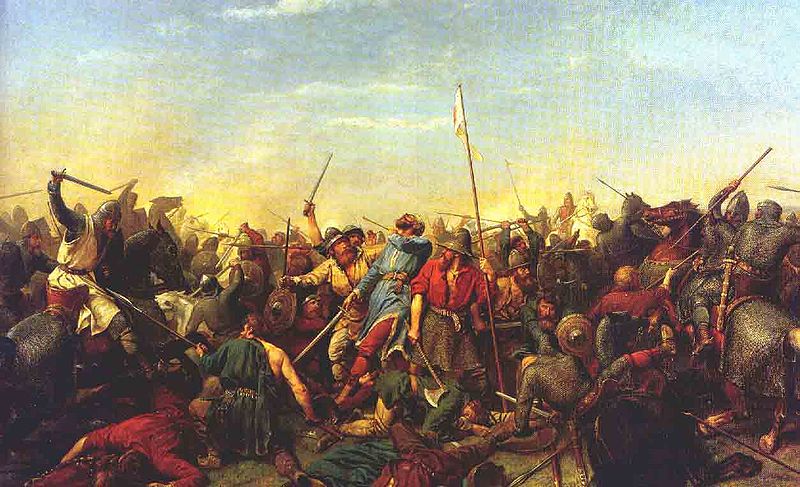St Brice's Day Massacre: Mass Murder of the Danes in England
If the Viking attack on Lindisfarne is the first chapter of Viking glory, the Mass Murder of the Danes in England is a very good reason for the Vikings to raid Anglo-Saxon kingdoms.
On 13th November 1002, King Aethelred secretly ordered his men to carry out a massacre killing all of the Danes who dwelled in kingdom of Wessex.
Saint Brice was the fifth-century Frankish bishop whose feast day was the 13th November. This "feast" doesn't mean a lavish meal to celebrate something. Instead, it is an annual religious celebration, a day that the Christians dedicated to a particular saint.

Saint Brice's Day Massacre killed all of the Danish settlers in England
At this time, Saxon kingdom of Wessex was ruled over by King Aethelred. From the beginning of the 10th century, the Vikings carried out many raids plundering Wessex. The Vikings established their settlement in England as well. Many historians believed that the majority of these new settlers were the farmers would desire to learn and exchange knowledge with other culture. But the locals in England didn't think so, especially the King.
King Aethelred justified for his deed of St Brice Massacre in 1004 that:
To the effect that all the Danes who had sprung up in this island, sprouting like cockle amongst the wheat, were to be destroyed by a most just extermination, and thus this decree was to be put into effect even as far as death, those Danes who dwelt in the afore-mentioned town, striving to escape death, entered this sanctuary of Christ, having broken by force the doors and bolts, and resolved to make refuge and defence for themselves therein against the people of the town and the suburbs; but when all the people in pursuit strove, forced by necessity, to drive them out, and could not, they set fire to the planks and burnt, as it seems, this church with its ornaments and its books. Afterwards, with God's aid, it was renewed by me.
The historians believed that there was a significant loss of life although we cannot have the precise number of death toll. The archaeologists believed that this massacre killed Gunhilde who was the daughter of King Harald Bluetooth and the sister of Danish king at that time, Sweyn Forkbeard.

Blood should be paid by blood and kinsmen to kinsmen should be true
Gunhilde got married to Pallig who served King Aethelred. Historians believed that she lived in England as a hostage. Being a Dane in her blood, Gunhilde was allegedly executed in the St Brice Massacre. So was Pallig her husband as the historians believed. Some sources mentioned Pallig provoked an uprising against the King but failed.
On hearing the death of his sister and brother in law, Sweyn assembled his army and waged war against Saxo kingdom of Wessex. The historians believed that Sweyn Forkbeard's motive was to take revenge for the death of his sibling. Others believed that Gunhilde's death was just a superficial and justifiable reason to raid England. Because after all, there would always be an eco-political reason underlying most wars even if it declared itself to the public as something reasonable.
In 2008, the archaeologists found out a mass grave in the St John's College in Oxford. It included remains of nearly 40 Norse men inside a pit. The researchers concluded that these men lived around the end of the 10th century to 1020AD. The victims were around their fighting age, from 16 to 25. Their bones showed signs of sword thrust and trauma. These victims must have met a bloody demise.

Remains inside the mass grave in Oxford
Everything as the historians believed was trying to point that this mass grave was the result of the St Brice Massacre in England.
And it turned out to be that the St Brice Massacre was a wrong political movement of King Aethelred the Unready. Sweyn Forkbeard quickly attacked Wessex overthrowing Aethelred and became the first Viking Danish King of England (despite being short-lived reign).




